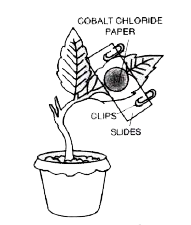Body is enclosed in dorsal carapace and ventral plastron in
crocodiles
lizards
snakes
chelonians
The correct Answer is:D
To solve the question "Body is enclosed in dorsal carapace and ventral plastron in," we can follow these steps:
Step 1: Understand the Terms
- Dorsal Carapace: This refers to the hard upper shell that covers the back of certain animals.
- Ventral Plastron: This is the hard shell that covers the belly or underside of the same animals.
Step 2: Identify the Organisms
- The question provides four options:
1. Crocodiles
2. Lizards
3. Snakes
4. Chelonians
Step 3: Analyze Each Option
- Crocodiles: They have a tough skin but do not possess a carapace and plastron.
- Lizards: They have scales and do not have a carapace or plastron.
- Snakes: Similar to lizards, snakes have scales and lack a carapace or plastron.
- Chelonians: This group includes turtles and tortoises, which are characterized by having both a dorsal carapace and a ventral plastron.
Step 4: Conclusion
Based on the analysis, the correct answer is Option 4: Chelonians. They are the only group among the options that possess both a dorsal carapace and a ventral plastron.
---
- Dorsal Carapace: This refers to the hard upper shell that covers the back of certain animals.
- Ventral Plastron: This is the hard shell that covers the belly or underside of the same animals.
- The question provides four options:
1. Crocodiles
2. Lizards
3. Snakes
4. Chelonians
- Crocodiles: They have a tough skin but do not possess a carapace and plastron.
- Lizards: They have scales and do not have a carapace or plastron.
- Snakes: Similar to lizards, snakes have scales and lack a carapace or plastron.
- Chelonians: This group includes turtles and tortoises, which are characterized by having both a dorsal carapace and a ventral plastron.
Based on the analysis, the correct answer is Option 4: Chelonians. They are the only group among the options that possess both a dorsal carapace and a ventral plastron.
Topper's Solved these Questions
- ANIMAL KINGDOM BOOK - AAKASH SERIESCHAPTER - ANIMAL KINGDOM EXERCISE - EXERCISE -II (AVES)
8 Videos
- ANIMAL KINGDOM BOOK - AAKASH SERIESCHAPTER - ANIMAL KINGDOM EXERCISE - EXERCISE -II (MAMMALIA)
21 Videos
- ANIMAL KINGDOM BOOK - AAKASH SERIESCHAPTER - ANIMAL KINGDOM EXERCISE - EXERCISE -II (PISCES)
14 Videos
- BIODIVERSITY AND CONSERVATIONBOOK - AAKASH SERIESCHAPTER - BIODIVERSITY AND CONSERVATIONEXERCISE - EXERCISE-II India - A major Source of Biodiversity and its Preservation
2 Videos
Similar Questions
Dorsal root and Ventral root of spinal cord
View SolutionCarapace is present in
View SolutionDorsal and ventral fins of Anabas have
View SolutionCarapace occurs in
View SolutionHow do you distinguish between dorsal and ventral surface of the body of earthworm ?
View SolutionGiven below is the diagram of an experimental set-up to study the process of transpiration in plants. Study the same and then answer the questions that follow :

After about half an hour what change, if any, would you expect to find in the cobalt chloride papers placed on the dorsal and ventral sides of the leaf? Give a reason to support your answer.
View SolutionA: In cockroach, each segment is covered by three hardened plates called sclerites.
R: These sclerites are dorsal tergite, ventral sternite and lateral pleurite.
View SolutionA: In cockroach, each segment is covered by three hardened plates called sclerites.
R: These sclerites are dorsal tergite, ventral sternite and lateral pleurite.
View SolutionSlime pores occur ventrally in
View SolutionBody of the urochordata is enclosed in a
View Solution
